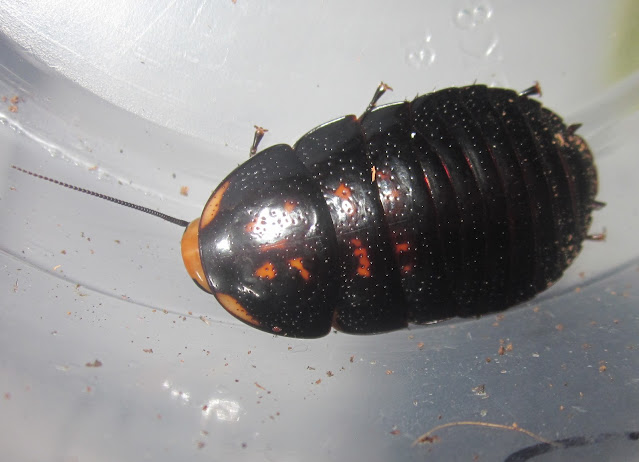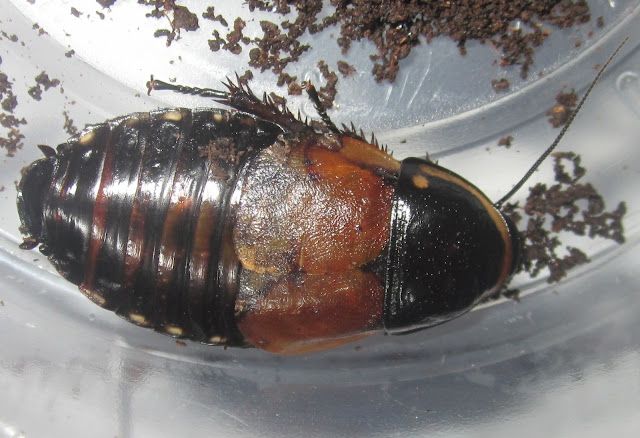They're not nearly as big as Hormetica strumosa, but I'm hoping the ease of care part will mean I'll actually be able to breed these with little issue... 😅 Just in case though, this is one species I'll sure to send out to a couple of friends who I know have good luck with Hormetica/Lucihormetica (one of which is Ty Randall, who is practically mass producing H.strumosa at this point, and has no issues breeding the three hobby Lucihormetica either).
I've got my dozen or so individuals (only 4 of which are females) housed in a moderately ventilated container with 4-5 inches of coconut fiber substrate, with some leaf litter on top. I'm keeping them humid, and at around 75F° for now. I'll be feeding them dog food, fruits and veggies.
Here are some pics of a large nymph and my only adult:
 |
| Large nymph |
 |
| Adult female (probably molted in transit, hence why her wings are screwed up) |
Hopefully some more will mature soon, this female is the only adult in the colony. Really wanna get some pics of some perfectly formed adult males and females. 😁
Well, that's gonna do it for this post, thanks for reading, hope everyone enjoyed, stay safe, and I'll see y'all soon! 😉





Really like the markings on the nymph. Not a million miles from what an image search tells me an adult Eublaberus marajoara looks like.
ReplyDeleteAgain, congrats on everything new. I've never heard of these species before.
Yeah, definitely quite pretty as nymphs! (unlike E.marajoara nymphs which are pretty unassuming compared to their adults).
DeleteThanks, really pumped with the selection I got! 😁 Yeah most of these aren't too common in the hobby.